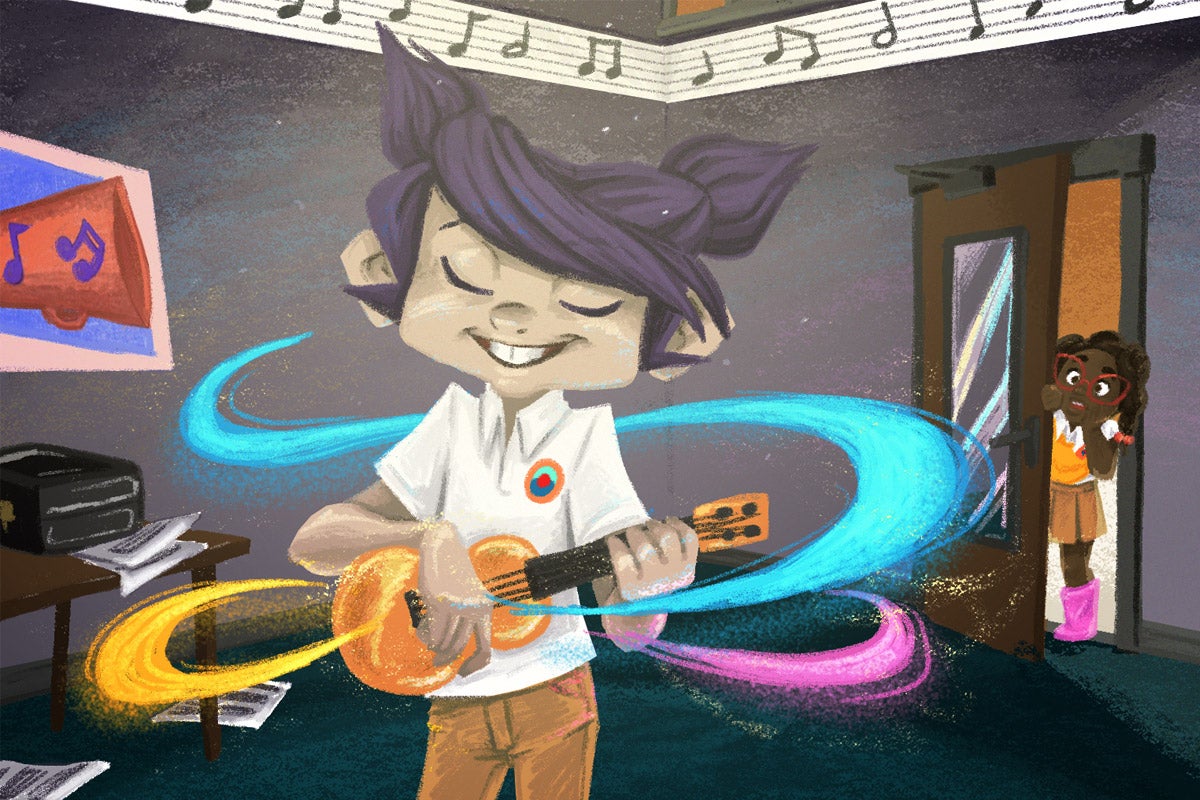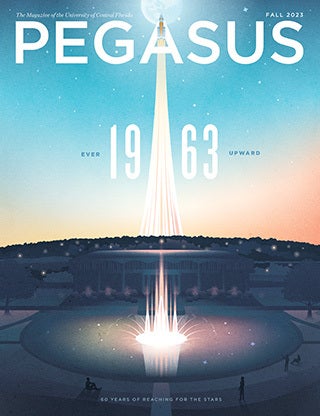A young girl with a speech disorder learning to express herself. A baby sea turtle trying to make its way to the ocean while confronted with obstacles.
UCF’s animation programs were ranked No. 4 among the Top 40 Public Animation Schools and Colleges in the nation by the Animation Career Review.
The films produced by this year’s senior character animation students are more than art for art’s sake. Both “Ukelayla” and “Night Light” are decidedly message-driven. And after two years spent creating the films, students in UCF’s character animation program are working to ensure their films reach new audiences beyond premiere night on Monday, April 23, at the Center for Emerging Media in downtown Orlando. The showings are free and open to the public.
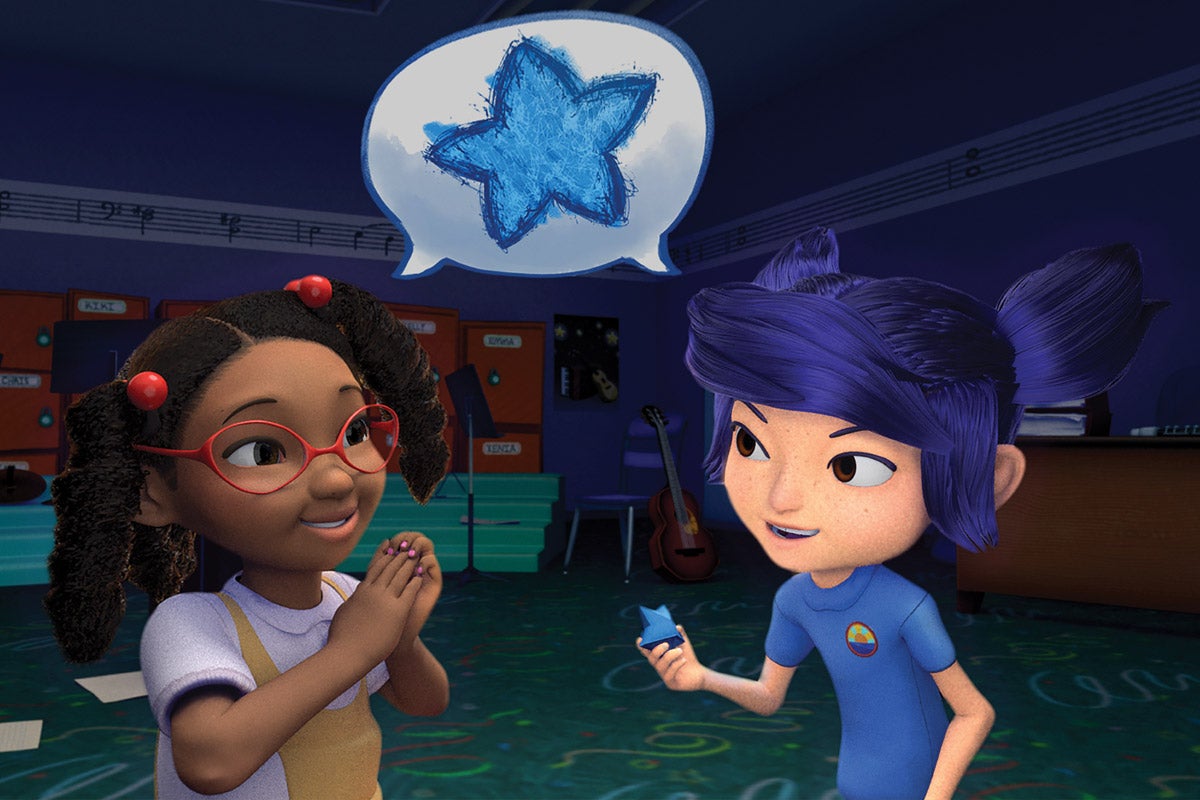
Meet Layla of “Ukelayla”
“Ukelayla” tells the story of Layla, a young girl living with childhood apraxia of speech (CAS), a motor speech disorder that makes it difficult for children to send oral messages from their brain to their mouth. Children with CAS will often know what they want to say but are unable to verbally communicate it.
“It was really important that Layla portray herself the way that somebody with [childhood apraxia of speech] would,” Thomas says.
Layla’s frustration with the inability to express herself leaves her isolated, but she eventually learns to express herself through the power of music and friendship. The film’s title is a mash-up of the main character’s name and the ukulele, the instrument Layla uses as a medium to communicate.
“I wanted to bring light to this situation that many kids go through and give them representation in media where there really hasn’t been any,” says senior Character Animation major Haleigh Mooney, who pitched the story for “Ukelayla” and acts as student director on the film.
To make sure they got the details right, the “Ukelayla” team partnered with the nonprofit organization Childhood Apraxia of Speech Association of North America to ensure that CAS was depicted authentically.
For the film’s production manager Tabitha Thomas, “Ukelayla” was especially personal. The senior’s younger brother has CAS, which provided her with insight into the disorder.
“It really spoke to me,” she says. “I would call my mom, and she would tell me stories about my brother when he was younger and how he would act at that age,” Thomas says. “We did a lot of research. It was really important that Layla portray herself the way that somebody with CAS would.”
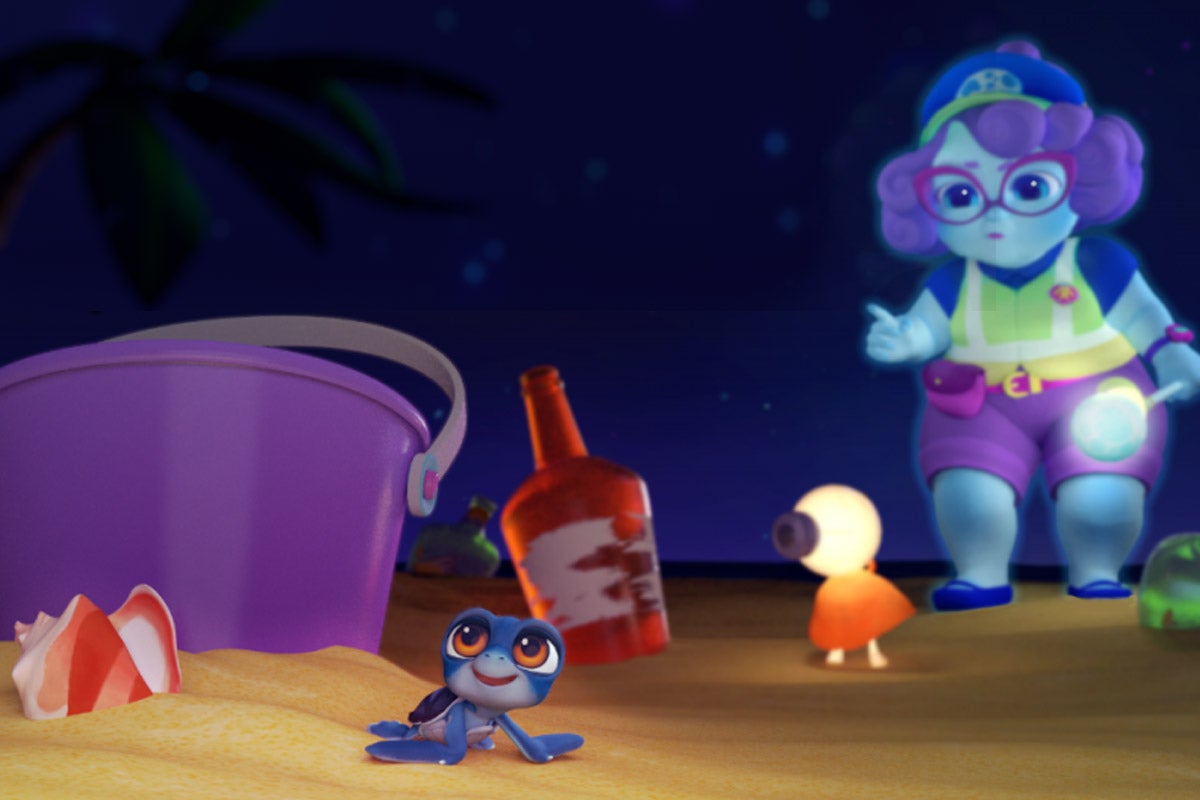
Meet Fin of “Night Light”
The film “Night Light” follows a baby sea turtle named Fin on his journey from nesting beach to the ocean.
The film touches on the threat of light pollution to hatchlings, who are drawn to the brightest nearby light.
The film touches on the threat of light pollution to hatchlings, who are drawn to the brightest nearby light. Artificial light from sources like street lamps can distract baby sea turtles away from the reflection of natural moonlight off the ocean’s surface, exposing them to moving vehicles and other threats. On his journey, Fin is joined by Abueluna, a maternal spirit, and Lumin, a friendly light bulb. Abueluna supplies wisdom and guidance by following the moon as a natural light source, while Lumin represents humankind’s curiosity and ignorance about nature.
The “Night Light” team consulted with sea turtle expert and UCF associate professor of biology Kate Mansfield, as well as the UCF Marine Turtle Research Group, to ensure accuracy in even the smallest details, such as nailing the texture of Fin’s shell. Students from the program also visited nesting sites in Melbourne Beach with the research group to see the sea mammals up close. The film’s creators were careful not to dissuade people from interacting with nature, but rather inform the audience on how to do so safely.
“We’re saying that there is a correct way to have a relationship with nature. People need to know that because it affects the turtles,” says senior Character Animation major and co-art director Jonathan de la Uz. “It’s better if we can teach people the right way to be with nature instead of separating people from it completely.”
The teams hope the short animated films live on beyond the premiere. The “Ukelayla” team hopes to provide DVDs of the film to speech clinics for children, while the “Night Light” creators are in talks with the Brevard Zoo and the Barrier Island Sanctuary to start educational showings for visitors. And for about a year after the premiere, the films will be submitted to short film festivals. Both teams have opened ongoing fundraising pages to help pay for admission to the festivals.
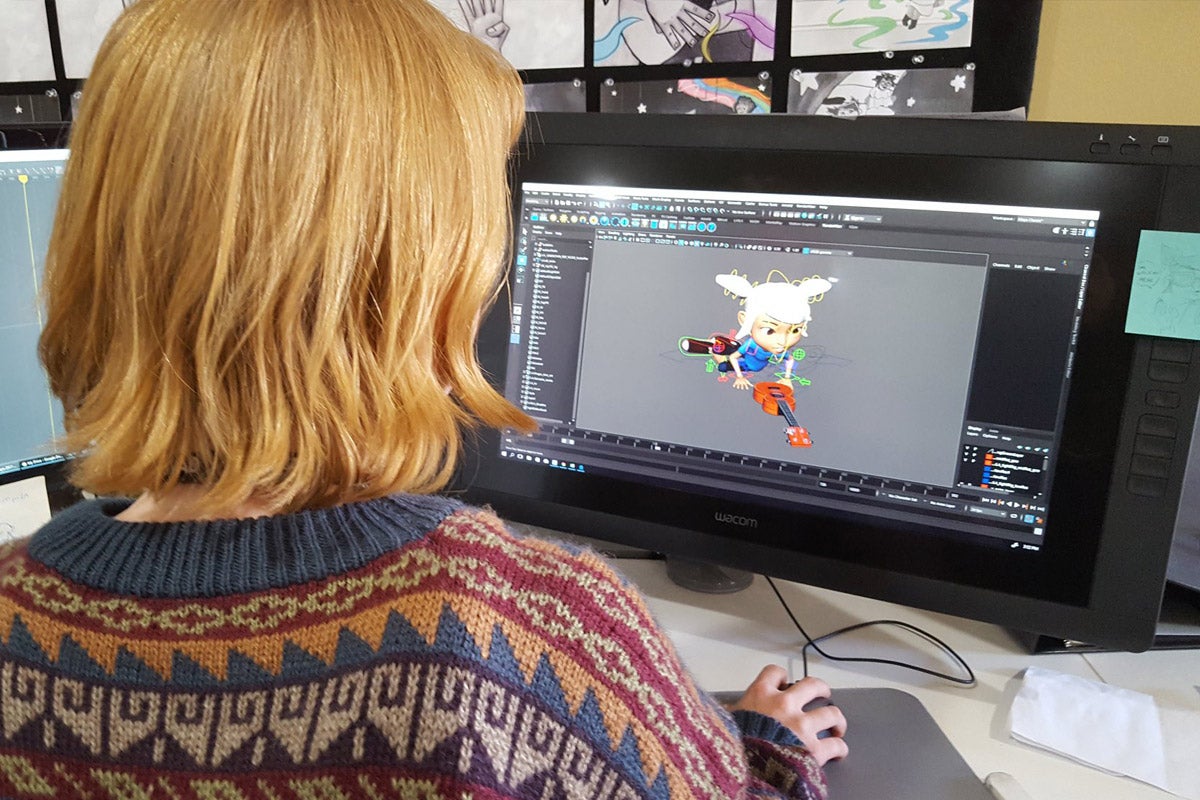
More About UCF’s Animation Programs
The animation programs at UCF continue to gain national recognition. Along with experimental animation, the character animation program was ranked No. 4 among the Top 40 Public Animation Schools and Colleges in the nation and No. 3 among of Top 10 Animation Schools and Colleges in the South by the Animation Career Review this year.
“You’re not here to suffer consequences for trying something new and not succeeding,” Mooney says.“You’re here to find out what you’re good at.”
The two-year specialization accepts only 30 students each year and prepares and trains them for careers in the animation and visual effects industry as animators, modelers, texture artists, and more. Graduates have gone on to careers with film and visual effects giants like Disney, Universal, Framestore and Blizzard Entertainment.
“We have students at all the major studios, and also working in gaming and special effects,” says Lecturer Jo Anne Adams, who has worked with the character animation program since 2008 and served as the faculty director for this year’s student films. “Because of their success, employers are noticing us and then students are more attracted [to the program].”
As a result of its exclusivity, the program is intensive, with students devoting anywhere from 40 to 80 hours per week on their films.
“It’s like a full-time job. The farther into the semester you get, the more you’ll see people coming in earlier and staying here later and later,” Thomas says.
And even though the hours can seem daunting, faculty members foster an environment that allows room for failure without fear of punishment.
“The faculty here really help you try to learn,” says Mooney. “You’re not here to suffer consequences for trying something new and not succeeding. You’re here to find out what you’re good at.”
Reserve free tickets to the UCF School of Visual Arts & Design’s Character Animation Premiere.
